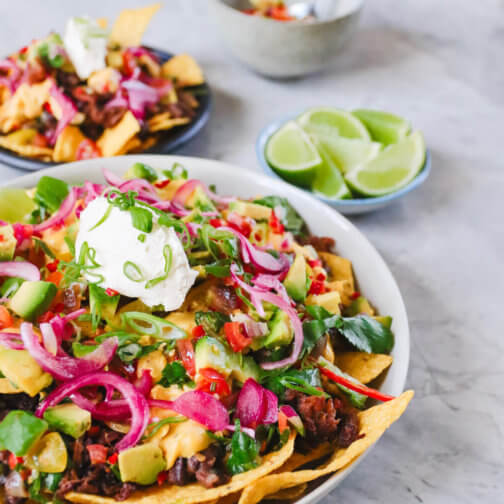
Fad diets are famous for ‘miracle’ claims that help us eat better and lose weight. Here’s why they aren’t the answer to achieving a healthy body weight – or even good health, for that matter!
Our bodies don’t like to be starved. Human physiology and our evolutionary development is set up for us to maintain weight. This was once vitally important to ensure survival when food was scarce, but flash forward to today and, at least in wealthy countries, the food landscape is vastly different.
We have thousands of calorie-dense options at our fingertips. It’s no surprise that many Australians struggle to maintain a healthy body weight. Despite new fad diets regularly being touted as the answer to our health woes, they simply don’t work. And it’s important to understand why.
Most importantly, when it comes to achieving a healthy body weight or long-term weight loss, diets rarely work. The greatest downfall of most is over-restriction, which can lead to hunger, cravings and then binges and subsequent feelings of failure. It’s a nasty cycle.
Weight loss is also not as simple as eating less and moving more. There are a lot of complexities at play here, including appetite-influencing hormones, the interplay of genetics, stress levels, our emotional state, eating environments, support networks – even how much we sleep can influence our appetite and body weight.
Let’s take a look at the claims of some of the most popular fad diets and consider how effective they really are.
THE KETOGENIC DIET
Originally intended as a regimen to treat epilepsy that doesn’t respond to medication, the ketogenic diet has become one of the most googled dietary trends in the world.
A ketogenic diet (keto for short) is a very low-carbohydrate, high-fat way of eating, which limits total carbohydrate intake to about 20 grams per day. The intention is to achieve a state of ketosis, which causes your muscles and liver to switch their primary fuel source from glucose to fatty acids, as your liver starts to produce ketone bodies to fuel your brain and other organs.
In order to achieve ketosis, it is commonly recommended that a person avoids carbohydrate-rich foods like wholegrains, legumes, starchy vegetables and most fruit, while greatly increasing consumption of fats and oils, certain meat and dairy products, nuts, coconut products and avocado. A small amount of low-carbohydrate veg – such as leafy greens, brassicas, and mushrooms – is allowed.
Proponents claim that a keto diet can not only assist with weight loss but help manage diabetes as well. But does the science support these claims? Well, in the first few days of eating this way a person can indeed lose a decent amount of weight, but the scales aren’t always an accurate reflection of what’s going on inside.
When carbohydrate intake is restricted, glycogen stores (and therefore water stores) in muscles are reduced, resulting in weight loss but not necessarily fat loss. Most of this water weight will return as soon as a person starts to eat enough carbohydrates again. Additionally, the keto diet as well as other adaptations of a low-carb diet, such as Atkins or the Dukan Diet, are too low in fibre and too high in inflammatory compounds, which can harm the health of your gut microbiome. The short-term weight loss effect of the keto diet simply does not outweigh the long-term risks of eating this way.
PALEO DIET
There’s a lot to unpack when it comes to the paleo diet. This diet was popularised by American scientist Dr Loren Cordain, who argued that if we return to our prehistoric roots and eat the foods of our ancestors, we could reduce our ill health and disease rates. The modern adaptation of the paleo diet recommends roughly 60 percent of calories come from animal products with the remaining 40 percent derived from plants. This diet promotes the intake of meats, eggs, fish and seafood, non-starchy vegetables, tubers, nuts and seeds, coconut and olive oil. Foods to avoid include wholegrains, legumes, dairy products, processed foods and vegetable oils.
There are some positives here.
The elimination of dairy and processed foods coupled with the promotion of wholefoods is a big move in the right direction. However, the heavy focus on meats and the elimination of legumes and grains is not so positive. Additionally, the paleo diet promoted today is a far cry from the diets our ancestors consumed. I don’t know about you, but I certainly haven’t stumbled across any evidence that suggests cavemen consumed processed meats such as bacon and salami or paleo-approved chocolate bars. Also, most plants consumed in the paleolithic era no longer exist and domestication of livestock has greatly reduced the amount of omega-3 fatty acids found in meat today. So, we are actually hard-pressed to accurately replicate a prehistoric diet today.
Nutritional anthropologists who have analysed paleolithic diets suggest the average fibre intake during this era was between 70–150 grams per day – far more than the average Australian currently consumes. In fact, it would be near impossible to achieve this on a modern paleo diet, given the focus on animal products (which contain no fibre) and the avoidance of legumes and wholegrains.
Conversely, the overall nutrient intake of someone following a healthy plant-based diet might actually come closer to reflecting the micro and macro nutrient intake of our paleolithic ancestors.
LOW LECTIN DIET
Lectins are a type of carbohydrate-binding protein that are in all plant foods, and are found in particularly high amounts in raw legumes and wholegrains. Therefore people following a low-lectin diet focus on grass-fed meats, A2 milk, and low-lectin vegetables like leafy greens, cruciferous veggies and sweet potatoes, while eschewing most legumes, wholegrains and nightshade veggies.
Lectins have received much press in recent years, since certain fad diet books tarnished them as ‘anti-nutrients’, falsely claiming they are the ‘real’ cause of autoimmune conditions, inflammation and obesity. This is a perfect example of how a nugget of truth can be stretched beyond recognition. When consumed in their active form, lectins can cause negative side-effects like nausea, vomiting and diarrhoea, and they have also been shown (in animal studies) to interfere with the absorption of certain minerals.
However, it is important to remember that people rarely eat raw legumes or seek to consume uncooked wholegrains!
Cooking and soaking can deactivate most lectins, and our bodies take care of the rest because we produce certain enzymes that can degrade some lectins.
In fact, lectins can actually be beneficial, acting as an antioxidant, protecting our cells from free-radical damage. Lectin-rich foods like legumes, wholegrains and nuts have consistently been associated with better health outcomes, including weight loss and reduced risk of cardiovascular disease and diabetes. These foods are also valuable sources of vitamins, minerals, protein, healthy fats and fibre. The benefits of consuming lectin-containing foods far outweigh the hypothesised risks.
SUGAR-FREE DIET
The idea behind a sugar-free diet is to eliminate all added sugars and limit foods with naturally occurring sugars, such as fruit and carbohydrate-rich vegetables.
To adhere to this diet, a person will commonly avoid any foods with processed sugar, maple syrup or agave listed as an ingredient, and alcohol. Some even greatly reduce their intake of starchy vegetables like potato, corn and peas, and eliminate most fruits. Although, depending on who you talk to, some fruits are allowed after an initial ‘detox’. This diet tends to be big on coconut oil, meats, nuts and nut butters, allows full-fat dairy products, and promotes the intake of non-starchy vegetable options like greens, brassicas and salad vegetables.
There are some positives here – Australians consume far too many processed foods, so limiting intake of lollies, soft drinks, ice-creams, pastries, desserts and so on will obviously provide health benefits and initially people may also lose weight. However, there is definitely no scientific evidence to support the avoidance of fruits and vegetables because of their naturally occurring sugars. Fruit and veggies come packaged with fibre, water, vitamins and minerals, protein and antioxidants – not just natural sugars.
When it comes to weight management, scientific studies have consistently associated fruit and vegetable consumption with weight loss. When removing these healthy foods from the diet, it is not uncommon for other foods that are less health-promoting to start creeping in.
Carbohydrate-rich wholefoods aren’t the enemy, they are a good source of the energy, fibre and nutrients required for longevity.
A LIFESTYLE THAT WORKS
Fad diets fail over and over again.
They simply aren’t the answer for achieving a healthy body weight. The way forward is a sensible approach to food and nutrition, filling your plate with whole plant foods while crowding out the unhealthier foods. Eating this way is not a ‘diet’ per se. It’s an evidence-based, sustainable, health-promoting lifestyle. A wholefood plant-based lifestyle also changes your gut microbiota, increasing healthy bacteria, improving insulin sensitivity and protecting against chronic disease.
There are now countless studies suggesting a plant-based approach is the optimal choice for our overall health, as well as a achieving healthy body weight.
Focusing on fruits, vegetables, wholegrains, legumes, small amounts of nuts and seeds and doing so consistently over time will yield results. Part of why it works so well is that whole plant foods have a low calorie density, increasing satiety rather than creating the deprivation experienced when trying to adhere to a typical restriction style diet. This bolsters our ability to stick to a healthy eating pattern in the long term – the key to success!


























